ALIGNMENT FAQ
CamberCaster
Camber is the measurment of how much the top of the wheel is tilted in or away from the center of the vehicle. Most FWD or AWD cars run slight negative camber to help combat excessive understeer.
On most cars, running excessive negative camber will wear the inner edge of tires VERY fast. However, for some reason Subarus tend to get good tire life when running excessive negative camber.
Stock adjustments will get you up to -1.5 degrees. With aftermarket camber plates, one can achieve up to -6 degrees of camber. Most Subaru drivers are happy with between -1.5 and -2.0 and notice no ill wear patterns on their tires. I personally run -3 degrees on all 4 wheels on my Legacy, and I've driven 10,000+ miles like that and I have had no abnormal tire wear.
Camber should match side to side (per axle). Generally, there is a tolerance of about .5 degrees before there is a drivability concern. Usually anything over .5 degrees split will cause the vehicle to pull towards the more positive side (wheel with the most positive camber).
On our cars, Camber is adjustable by an essentric bolt in the steering knuckle in the front.
Our cars do not have a factory rear camber adjustment, however I've been able to adjust rear camber by close to 1 degrees by loosening the knuckle bolts and manually pushing in or pulling out the entire knuckle, and tightening the bolts back up. There are aftermarket camber bolts and adjustable lateral links available to allow further camber adjustment in the rear.
Toe
Caster is the angle of the upper and lower steering pivots viewed from the side.
To best explain steering pivot, its the lower part of the suspension that turns, and the upper part that turns. In a Subaru, this is the lower ball joint and the strut mount (top hat).
Caster has a direct impact on steering effort and lateral stability.
Negative caster will cause the vehicle to wander at high speeds, reducing lateral stability. But on the plus side, it will reduce steering effort.
Postitive caster will help the vehicle retain lateral stability at high speeds, but in turn it will raise your steering effort a little bit. Most cars are set up out of the factory with about 5 degrees of positive caster. Some German cars have as much as 9 degrees of positive caster.
Caster has little to no effect on tire wear. Like camber, caster has a tolerance of about .5 degrees from side to side. If there is a split of more then .5 degrees, the vehicle will usually pull to the more negative side.
In a Subaru (and most other cars on the road) caster is not adjustable. If there are caster problems, its a good indication that there is a bent steering / suspension component from some kind of accident.
Steering Axis Inclination (SAI)
Toe is probably the single most important alignment angle. Toe identifies the direction a wheel is turned compared to the centerline of the vehicle. Postive toe is the wheel turned out, negative toe is the wheel turned in.
Toe being outside of specifications can cause a few different problems. The big ones are abnormal tire wear, vehicle pulling, and a crooked steering wheel. The ideal toe setting is 0 degrees on all 4 wheels.
On our cars, toe is adjustable on all 4 wheels. If further adjustment is needed on rear tires, aftermarket lateral links are available that allow more adjustment.
Included Angle
Steering Axis Inclination (also called SAI) is the angle of the steering pivots viewed from the front.
Like caster, SAI can help improve directional stability by reducing the scrub radius.
SAI is NOT adjustable on any vehicle. If SAI is outside of specifications, its a good indication that there is a bent or broken steering / suspension component. SAI is mainly used by alignment technicians to help them diagnose bent parts.
Scrub Radius
Like SAI, Included Angle (also called IA) is a diagnostic angle. Its the sum of SAI + Camber. It is also used to help diagnose bent suspension parts. IA is NOT adjustable.
Setback
Scrub Radios is the distance between the extended lines of the steering axis and the tires centerline where the tread contacts the road.
Scrub radius is NOT adjustable, however it can be changed a few different ways. Bent suspension parts will change your scrub radius. If this is the case, the vehicle will pull hard in one direction since the scrub radius does not match on each side. Another way scrub radius changes is by installing different offset wheels. This can have a negative impact on vehicle handling.
Thrust Angle
Setback is the term used when one wheel on an axle is positioned further back then the other wheel. There is generally a tolerance of about .25 inches. Anything more then that indicates that there is a bent / broken suspension component.
Ride Height
Thrust angle is the diection that the rear wheels are facing in relation to the center line of a vehicle. Thrust angle IS adjustable on almost all vehicles. On a Subaru, you adjust rear toe to correct the thrust angle.
If the thrust angle is out of spec, then the vehicle will "dog track". As well, it will handle differently when turning left vs right.
On a solid rear axle vehicle (like a truck), if the thrust angle is not in spec...then usually the vehicle must visit a body shop for frame repair. Sometimes the rear diff can be re-positioned to compensate for the thrust angle however.
If I need to explain this one, there are some problems lol.Toe Out On Turn
Ride height is not adjustable on Subarus unless you have an aftermarket coilover system installed. You can get a lower ride height by installing lowering springs on your factory struts too.
Any time you change your ride height, you MUST do an alignment since it will affect your camber and toe on all 4 wheels.
Offset
During a turn, the inside wheel of the turn will turn sharper then the outside wheel will. This is the "toe out on turn". See the above illustration to understand.
If this is outside of specs, its likely cause by a bent tie rod or steering arm.
Alignment images from http://www.anewtoronto.com/wheel alignment.html
Zero Offset - The hub of the wheel is in line with the centerline of the tire
Negative Offset - The hub of the wheel is towards the inside of the vehicle
Positive Offset - The hub of the wheel is towards the outside of the vehicle
By changing wheels to a set with a different offset, you effect toe out on turn and scrub radius.
SUGGESTED ALIGNMENT SETUPI will give my person reccomendations here based on a few different setups and driving styles. This is not a "one size fits all" chart, however its a good starting point. You will likely have to tweak the following numbers slightly to find something that feels good to you. These numbers are just what I have found works for me.Making your alignment work for you
Stock Suspension - Daily DriverFront Toe : 0Stock Suspension - Aggressive Cornering
Front Camber : -.8
Rear Toe : 0
Rear Camber : .6
Front Toe : 0Coilovers - Daily Driving
Front Camber : -1.5 give or take a bit. Max out the camber bolts and make have 0 cross camber
Rear Toe : 0
Rear Camber : -1 max out having 0 cross camber
Same as stockCoilovers - Drag
Front Toe : 0Coilovers - Aggressive Cornering
Front Camber : 0
Rear Toe : 0
Rear Camber : 0
Front Toe : 0
Front Camber : -3.2
Rear Toe : 0
Rear Camber : -3
Getting your alignment done
Any alignment changes you make have a direct impact on the way your vehicle handles. One of the biggest things you can change is the handling balance of your car by reducing understeer or oversteer.
Reduce Understeer : run more negative camber in the front. This is probably the single most important thing that anyone can do to make their car handle better. This will bring the car to a more "neutral" steering car.
More Understeer : run more positive camber in the front. This will likely make your car undrivable if you start going into positive numbers though. BE CAREFUL with this. If you're in the rain, snow, or ice and you're running positive camber, you will likely crash into a big tree and have an airbag blow up in your face.
Almost any automotive shop can do an alignment for you. "Stock" alignment settings for Subarus SUCK. Its better to walk in knowing the alignment you want. Ask to talk to the tech doing your alignment so you can explain to them what you want out of the car and they can help you decide what settings are best. Keep in mind though, that running a bit of negative camber on our cars WILL NOT wear out your tires like it will on most other vehicles, no matter what the tech tells you.
Make it VERY clear that you want 0 toe, 0 thrust angle, and 0 camber split on both axles. Make sure that they adjust camber on all 4 wheels as well. It blows my mind how many half *** alignments I've seen done where someone doesn't bother to touch camber....or they will get everything "in the green" and call it a day, but the car leaves with a .7 split on the front toe. If the tech tells you that camber is not adjustable, teach them something about your car. Earlier in this article I explained how both front and rear camber are adjustable. If for some reason the shop wants to charge you more to do this, walk away from them. This is part of a NORMAL alignment and does NOT cost extra to do.
ALWAYS ask for a before and after printout of your alignment.
If possible, watch the tech do your alignment. That way you can at least pretend you know what he is doing, and he is less likely to half *** it.
A fair price for an alignment is anywhere between $75 - $100.
Your alignment will likely come with a warranty. However, this warranty is void if you "race" or "abuse" your vehicle. Meaning if on your way home you go through the corners like a bat out of hell, it will void your alignment warranty if the shop finds out. So when you take your car back, don't mention that you have raced or "abused" your car. Some shops offer a "lifetime warranty" on their alignments. This usually runs about $150. If you plan on keeping your car for a long time, this may be worth it. If you do this, I suggest taking your car back about every 3 months to have everything checked.
The world's #1 resource for everything Subaru, with a core focus on supporting every individual in a positive environment, regardless of experience & technical ability.
Please take a second to click here to register, and in a few simple steps you will be able to enjoy a "NO DRAMA" community. Once registered please introduce yourself.
Thank You.
Please take a second to click here to register, and in a few simple steps you will be able to enjoy a "NO DRAMA" community. Once registered please introduce yourself.
Thank You.




 Thanks:
Thanks:  Likes:
Likes: 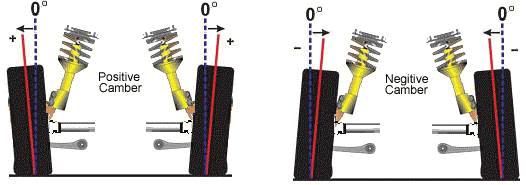
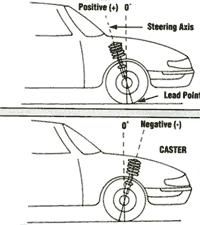
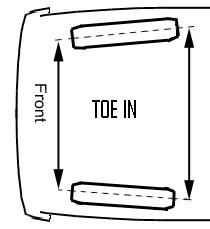
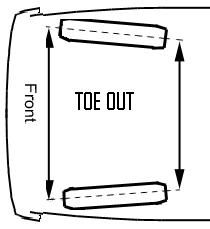


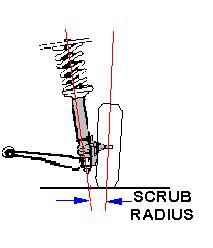
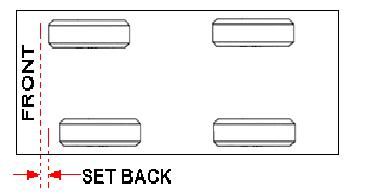
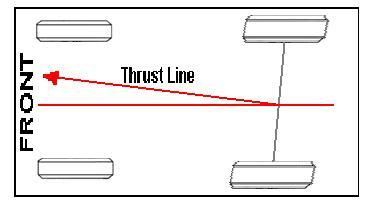
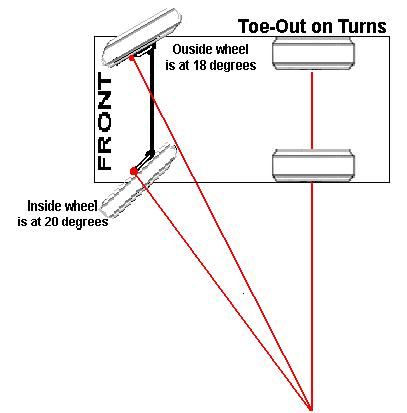

 Register To Reply
Register To Reply

Bookmarks